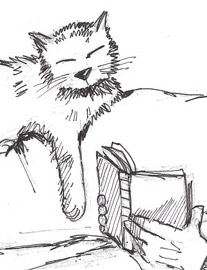
How to get that Burley fireball
If you have a Burley wood-burning stove then you know how impressive it can look when it's properly roaring. That makes it all the more frustrating if you have difficulty making it start to draw. After a lot of experimentation, I found that I could get a roaring fire more quickly than Burley's instructions indicated.
(tl;dr Keep a greater depth of ash. Don't have enough ash yet? Then read on.)
If you don't want the back-story or the analysis then you can skip straight to the how-to section.
Back story
When we were making decisions about getting our first wood-burning stove, I became fixated on the efficiency figures (geek!) for the various models and that's one reason that we decided on the Burley Debdale stove. Its understated, clean look helped a lot too.
We asked two installers for quotes. The first installer tried to dissuade us from our choice of stove, telling us about the difficulty he had lighting a Burley after installing it for a customer. I arrogantly assumed that he had been coddled by the use of less efficient stoves and that my inner pyromaniac would rise to the occasion and triumph over the Birley.
We went ahead and had the stove installed and, to my chagrin, I did indeed find it hard to light and keep lit. I often needed to leave the door ajar for a very long time and felt embarrassed on several occasions when I shut the door and the fire went out. Comments from my partner (who regretted allowing me to persuade her to buy the Burley) left me feeling awkward and somewhat guilty. After all, a quality wood-burning stove and its installation are not cheap purchases.
I assumed there was sonething about wood-burning stoves that I did not understand, so I tried to research diligently, but the internet was not forthcoming on insights. I experimented with different fire-building approaches, trying different layerings of materials, different thicknesses of kindling and adding cardboard where I had used paper. I kept thinking I'd found the thing that made the difference but the next time the fire would behave differently and I would realise it had been a fluke.
Thankfully, that came to an end.
Analysis
I noticed that coal-burning stoves have a grate and the air is drawn up through the various materials. This means that there is a constant airflow upwards through the bottom-most part of the fire.
In the Burley wood-burning stoves (unless you add the optional coal grate), the air enters the burning chamber through holes in the side. These holes are about 4 inches above the floor of the chamber.
You can think of the holes as being in two sets. The first set is along the front wall. This is presumably why Birley encourage you to drag burning embers to the front and add wood at the back.
The second set of holes is in each corner and those holes create an anti-clockwise vortex of air. This is what creates the "Birley fireball".

How to
Inspired by coal-burning grates, and wanting to prove that I could make this work without buying one for the Birley, I improvised something to make sure that air could get under any burning material.
I used three pieces of waste wood stood on edge and running from the front to the back of the stove. I forced them down through the ash to the base in order to make sure that they would stand firm with the weight of the rest of the paper and wood on top of them. I also made sure they were a few centimitres shorter than the depth of the chamber in the hope that the vortex could move around the outside of them.
The pieces of wood were each about 2.75 inches wide.
Using this fire base, I found I could close the door completely in five minutes and half close the air intake after another 5 minutes. This was considerably less faff than I had been used to!
I chose to run the wood front to back in order to allow the front air holes to push air under the fire. It turned out that this was unnecessary. I tried using just two pieces of wood from left to right and that worked just as well.
Finally, I just tried using a flat-topped piece of firewood with space around it on all sides and that worked just as well again.
As long as the wood gave a stable flat surface for the rest of the fire materials, it didn't seem to matter whether the air could get underneath. The piece of firewood on the left in the photo below is the fire base used in the previous photo.
Of course, after eliminating my theory about air having to get under the burning materials, I then realised (while writing this blog post) that I probably didn't leave sufficient depth of ash in the fire. Birley do say that ash build up is necessary.
I you move the ash around then it can compact quite easily and, of course, you don't have any ash in the fire when you first use it, so on these occasions I hope my tips will still help you.